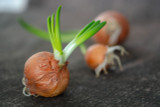Great Companion Flowers To Grow With Vegetables
Companion planting is an old gardening method. It involves growing certain plants together to help each other. Growing flowers and vegetables together can make your garden beautiful and healthy. This combination enhances the growth of your plants and makes them look visually appealing. This article will highlight the advantages of companion planting, introduce you to flowers to grow with vegetables, and share tips to help you succeed in your companion planting efforts.
Benefits of Companion Planting
Companion planting offers a variety of benefits for both flowers and vegetables. Some of the main advantages include:
Top Companion Flowers for Vegetables
Tips for Successful Companion Planting
26th Jun 2023
Recent Posts
-
The Secrets To Growing Radishes In Containers
Container gardening is a popular way to grow vegetables like radishes. Growing radishes in container …26th Jun 2023 -
How To Successfully Grow Onions From Seeds
Many recipes use onions to give a strong taste and smell. Growing onions from seeds is better than b …26th Jun 2023 -
How To Grow Radishes At Home: A Step-By-Step Guide
Growing your radishes at home can be a rewarding and delicious endeavor. These crispy and spicy vegg …26th Jun 2023





